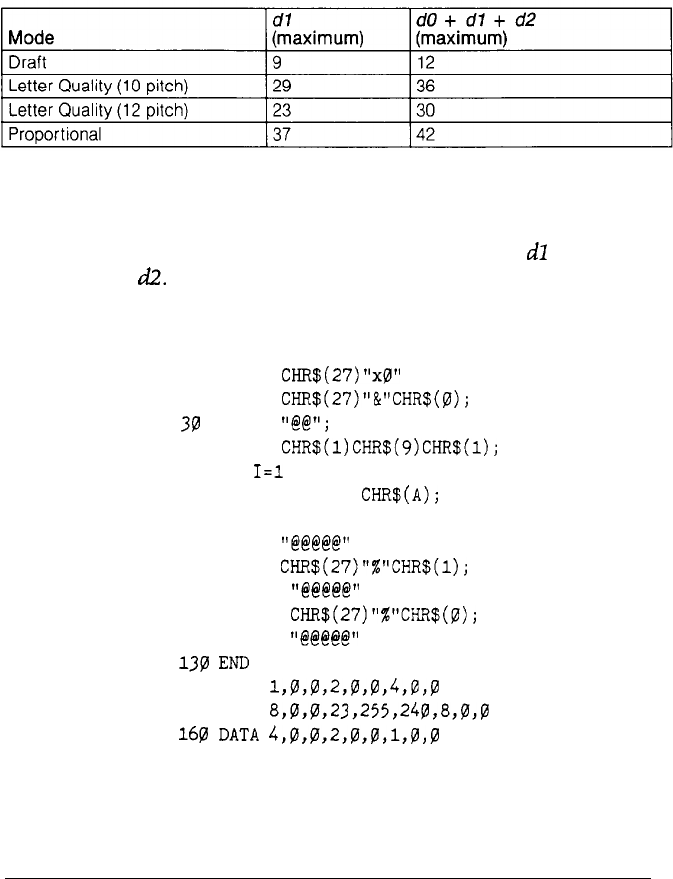
the character. By varying the width of the character itself and the spaces
around it, you can create proportional-width characters that print at
draft speed.
The table below shows the maximum values for these bytes.
The last part of the character definition is the actual data that defines the
dot patterns for each character. Since it takes three bytes to specify the
dots in
one
vertical column of dots, your printer expects
dl
x 3
bytes of
data to follow
dz.
An example character definition program should make this clear:
10 LPRINT
CHR$(27)"x0"
20 LPRINT
CHR$(27)"&"CHR$(0);
30
LPRINT
"@@";
40 LPRINT
CHR$(l)CHR$(9)CHR$(l);
50
FOR
I=1
TO 27
60 READ A: LPRINT
CHR$(A);
70
NEXT I
80 LPRINT
"@@@@@"
90 LPRINT
CHR$(27)"%"CHR$(l);
100 LPRINT
"@@@@@"
110 LPRINT
CHR$(27)"%"CHR$(0);
120 LPRINT
"@@@@@"
130
END
140
DATA
1,0,0,2,0,0,4,0,0
150 DATA
8,0,0,23,255,240,8,0,0
160
DATA
4,0,0~,0,0,~0,0
In line 10, the ESC x0 command selects draft style printing.
4-28
Using Software and Graphics


















